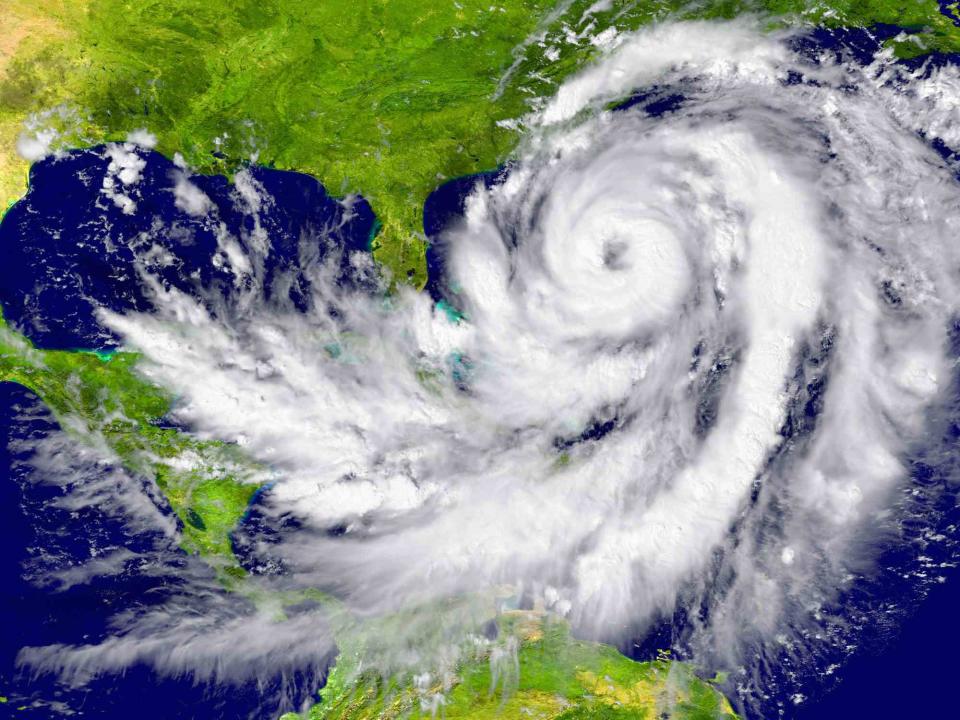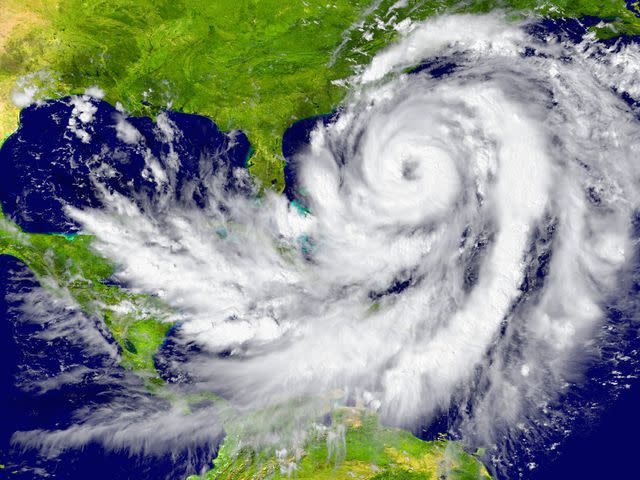What Do Hurricane Categories Really Mean?
What's the difference between Category 1, 2, 3, 4, and 5? Learn what hurricane categories mean and how to prepare for a hurricane.

Fact checked by Jillian Dara
If you happen to turn on the news during hurricane season and a storm is a-brewin,' there's a good chance that one of the anchors will mention a tropical storm has been upgraded and is now designated a Category 2, a Category 3, or heaven forbid a Category 5 storm. If you live in the South, the mention of a Category 4 or 5 storm gives you flashbacks to Hurricane Katrina or Andrew or Charley or Irma or Florence or any of the many, many storms that have battered the coast over the years. But what exactly is the difference between a tropical storm and a Category 3 or a Category 5 storm? Read on for details on how strong these storms are and how to prepare.
How Hurricanes Form And Get Named
All hurricanes start out as tropical cyclones, whipping up winds out in the Atlantic Ocean, usually accompanied by rain and storm surges. When a tropical storm gets big enough to attract attention, it's usually a tropical depression that is given a number by the National Hurricane Center (NHC), which is keeping tabs on them. Once its winds kick up to 39 miles per hour and sustain that speed for 10 minutes, it becomes a tropical storm and the NHC gives it a name. If the storm keeps growing and eventually sustains winds of 74 mph, it graduates to being a fully-fledged hurricane.

How Hurricane Categories Are Determined
To determine which category a storm belongs in, meteorologists use something called the Saffir-Simpson Hurricane Wind Scale, which measures a hurricane's strength based on sustained wind speed. The scale was originally developed by wind engineer Herb Saffir and meteorologist Bob Simpson in the mid-'70s and has been used ever since to help alert the public so they can prepare for the possible impact of impending storms. The scale lays out the speed of the wind and the type of damage and impact it can have.
According to the experts at the National Hurricane Center, the system divides storms into five categories. In general, damage rises by about a factor of four for every category increase.
What Hurricane Categories Mean
Category 1: Dangerous winds 74 to 95 mph, which may cause some damage to roofs and siding and topple trees and power lines. Power outages could last a few to several days.
Category 2: Extremely dangerous winds 96 to 110 mph, which could result in extensive damage to roofs and siding, snap power lines, uproot trees, and block roads. Power outages could last from several days to weeks.
Category 3: Winds 111 to 129 mph, which can lead to devastating damage to homes, major road blockages from fallen trees, and loss of power and water.
Category 4: Winds 130 to 156 mph leading to catastrophic damage to homes with winds strong enough to tear off roofs and walls. Most trees and power poles will be downed. Can make areas uninhabitable for weeks or months.
Category 5: Catastrophic winds 157 mph or higher that will level many homes. Fallen trees and downed power lines will isolate residential areas and make much of the area uninhabitable for weeks or months.
How To Prepare For A Hurricane
While winds zipping by at 129 miles per hour can certainly be terrifying, just because a storm has high-speed wind doesn't mean it will always cause a lot of damage. Things like up-to-date building codes can dramatically lessen the impact of storms, and other factors, such as the duration of high winds and a change of wind direction can also mitigate damage.
High winds, of course, are just a part of the damage that comes with a hurricane. The Saffir-Simpson Scale only measures wind and does not address the other forms of damage that people who live in hurricane zones know by heart: storm surge, floods, and tornadoes.
On the Atlantic coast, which includes the Gulf, hurricane season runs from June 1 to November 30. If the local news anchor is talking about storm categories during those months, be sure to pay attention, prepare your home, create a survival kit, and stay safe.
Frequently Asked Questions
How are hurricanes categorized?
Hurricanes or tropical cyclones receive a Category rating from 1 to 5, depending on wind speeds and expected damage, according to the Saffir-Simpson Hurricane Wind Scale.
What potential property damage will result from a Category 3 hurricane?
According to the National Oceanic and Atmospheric Administration, a Category 3 hurricane has "potential for significant loss of life and damage." This category indicates a major hurricane with winds ranging from 111 to 129 mph.
For more Southern Living news, make sure to sign up for our newsletter!
Read the original article on Southern Living.

